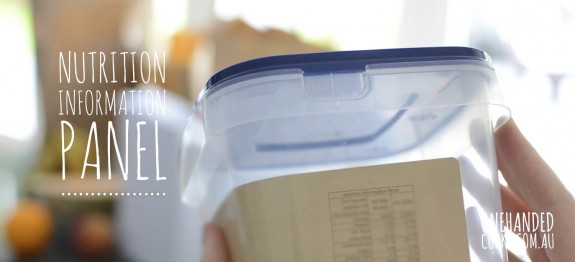Understanding Food Labels Part 1: The Nutrition Information Panel
In Australia and New Zealand food labeling is strictly regulated by Food Standards Australia New Zealand (FSANZ). Food labels are designed to help us make safer and healthier food choices. They labels tell us what is in the food product and how to prepare and store it.
Does the thought of reading and understanding food labels, comparing products and deciding on the healthiest option make you want to tear your hair out and avoid supermarkets altogether? Unfortunately for many trying to read and understand food labels and compare between products means a quick trip to the shops that should take a few minutes can take an hour (or more!), especially with clever marketing thrown into the mix. Well we have put together a little guide for you to help make things a little easier and help you see through some clever marketing.
Part 1: The Nutrition Information Panel

Nutrition information panels (NIP) give you information on key nutrients in the food product and on serving size. It allows easy comparison between products helping you make the healthiest choice for you and your family.
Nutrients
It is usually located on the back or side of the pack. NIP need to display information on the following nutrients:
- Energy in kilojoules (kJ), and sometimes calories (cal)
- Protein in grams (g)
- Total fat in grams (g)
- Saturated fat in grams (g)
- Total carbohydrates in grams (g)
- Sugar in grams (g)
- Sodium (salt) in milligrams (mg)
If a claim on the food package is related to another nutrient, e.g. “contains iron”, or “high in fibre”, that particular nutrient will also need to be listed on the NIP.
Serving sizes
A manufacturer determines the serving size of their product and the number of serves per product. This is also listed on the NIP. The panel will display the nutrition information in for both the “per serve” and “per 100g” or “per 100ml”. It is always useful to look at the number of serves per pack to help you determine your own serving size. Quite often we consume larger serves compared to what is listed.






























posted by Bella on January 1, 2016
Are the recommended serving sizes and %RDIs for adults? Even on childrens products they say for adult cobsuming 8700kjp/day?? How would u assess the childrens serving size based on those labels?